Investigation and conviction in 1996 murder raises questions
Stacey Stites was just 19 when she was killed in Bastrop, Texas.
Stacey Stites was weeks away from marrying her fiancé when she went missing.
Just 19 years old at the time, Stites didn’t show up for work one morning in 1996, and was found dead hours later. Investigators said she had been raped and strangled, then left on the side of the road.
It was a horrific crime that rocked the small town of Bastrop, Texas.
Rodney Reed, the man whose DNA matched that found in Stites’ body, was convicted of her murder and has sat on death row for 22 years. He has long maintained his innocence and claims that he and Stites had a secret, consensual relationship.

Stites’ family believe that’s a lie.
“There has never been any evidence, whatsoever, there was any type of relationship,” Stites’ sister Debra Oliver told “20/20.” “There’s no notes, there’s no letters, no phone records.”
The Innocence Project, a non-profit legal organization that works to free wrongly convicted people, picked up Reed’s case in 2012.

Lawyers from the organization say they have the evidence to prove investigators arrested the wrong man all those years ago. A host of celebrities and politicians have rallied behind Reed as well, pushing for him to be removed from death row and be granted a new trial, and bringing national attention to the case.
Last year, Texas officials granted Reed an indefinite stay of execution to examine claims that Reed is actually innocent.
But the State of Texas and Stites’ family believe Reed is the man who murdered her and he’s exactly where he belongs.
*Watch the full story on "20/20" TONIGHT at 9 p.m. ET on ABC.*
19-year-old found dead in Bastrop
Stacey Stites was the youngest of Carol Stites’ five children.
“She had her plans, and now somebody's taken that away,” Carol Stites said at the time of the murder.
“She was like the white tornado,” she told “20/20.” “That's exactly what they called her when she was little. She was into everything and did everything, and friends with everybody.”
Tami Amen, who was friends with Stacey Stites in high school, said Stites had a carefree personality and was always cracking jokes.
“She was looking for what everybody does, young love,” Amen said. “Every year, Smithville has their jamboree. That's where Stacey met Jimmy Fennell.”
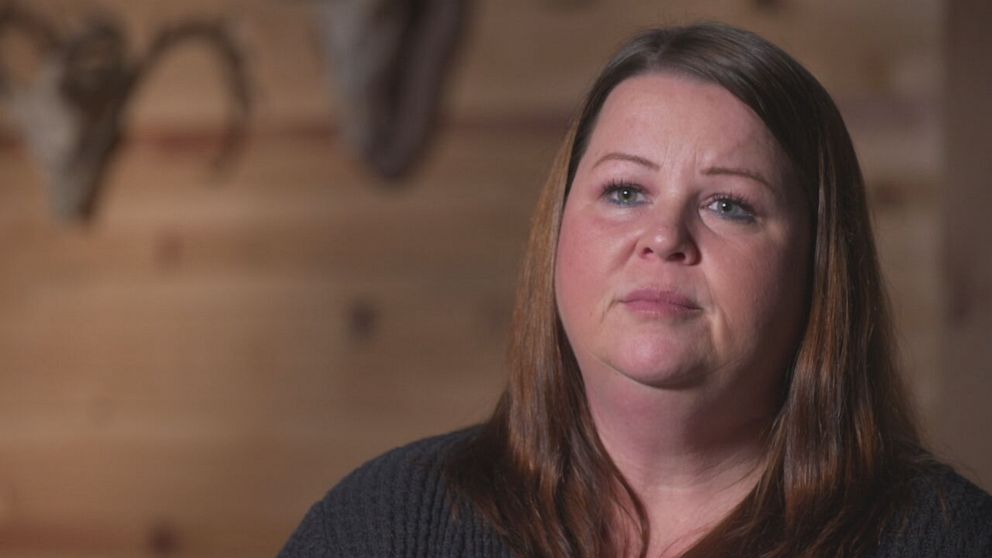
Stacey Stites moved in with Fennell in an upstairs apartment in the same building as her mother.
“They moved in together and they said, ‘We're engaged. We're getting married,’ that was just about them,” Carol Stites said.
Stites said her daughter wanted to make more money to pay for her wedding, so she got a job at a local H-E-B grocery company. She earned an extra 50 cents an hour to work in the produce department, but had to get to work very early in the morning.
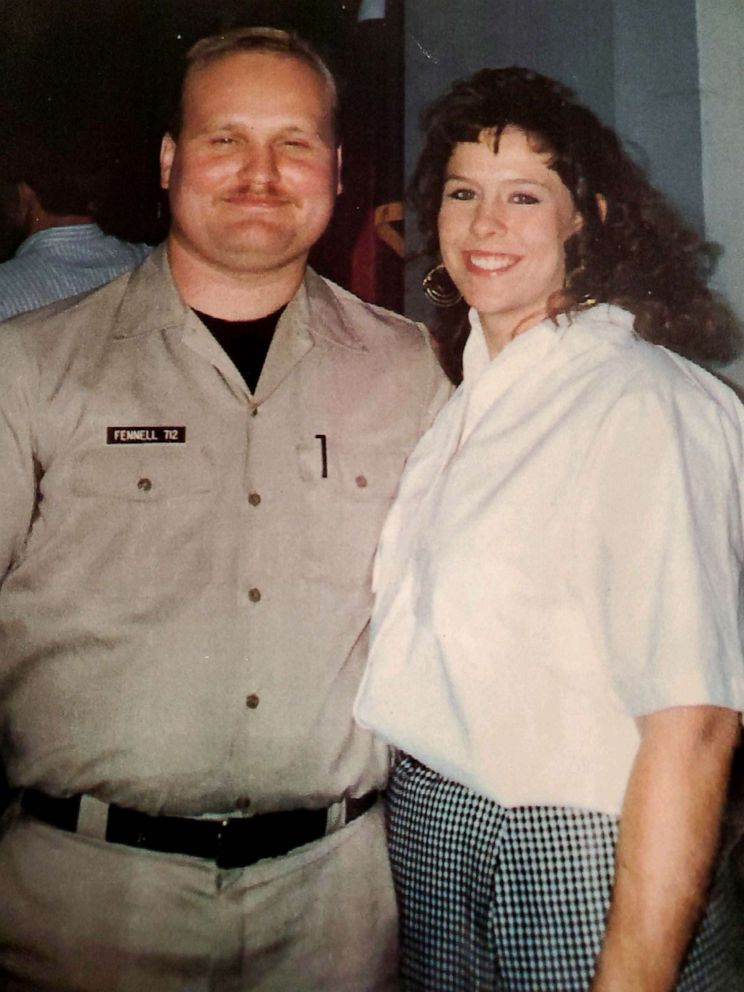
But Amen said Stacey Stites became less excited about her relationship with Fennell as time went on.
“It was definitely stressful for her just because she had to work and come home and she was expected to do laundry, clean,” Amen said. “For a 19-year-old that’s kind of a big transition.”
Stites’ sister Debra Oliver told “20/20” Stacey didn’t share any concerns with her. “She was really excited about getting married. She really loved Jimmy.”
Carol Stites said she “liked Jimmy.”
“He was raised in the church that I was raised in,” she said. “He's had the same values I was raised with. I thought he was heaven sent. This guy was here and it was just about everything that I wanted in a son-in-law.
The last time Carol Stites said she saw her daughter was on the evening of April 22, 1996, right before she and her fiancé were about to head upstairs to their apartment.
Shea Maloney, who hosts a podcast that covered the case, said Carol Stites saw her daughter and Fennell embrace outside her window, then saw them laughing and joking together as they made their way upstairs.
“The last words out of her mouth was, ‘Mom, I love you.’ And I said, ‘I know you do,’” Stites remembered.
Prosecutor Lisa Tanner said Stites left home at 3 a.m. to make her 3:30 a.m. shift at the grocery story, according to Fennell.

“She drove Jimmy's truck as she often did,” Tanner said. “Her normal route to work was on Highway 21 through Bastrop.”
Early the next morning, a patrol officer found a red truck in Bastrop at the high school. It was locked, but he noted a bag of clothing in the back of the truck and a broken piece of belt with the buckle attached, just outside of the driver’s door. The officer called it in but nothing seemed amiss, so the officer continued on his patrol.
That same morning, Carol Stites got the call that her daughter didn’t make it to work.
“Stacey was always on time,” she said. “I thought maybe [the] truck broke down or something.”
Carol Stites said she “immediately” called Fennell to let him know, and he said he’d “be down in just a minute.”
“He's getting dressed, he's tucking in his shirt,” Tanner said. “She notices that he looks he's just woke up. She grabbed the keys and she handed them to Jimmy so that he could go look for Stacey.”
Police realized the red truck they saw earlier was connected to Stites, who’d just been reported missing, and the team returned to the truck.
They asked Fennell, who had arrived at the scene, to unlock the truck and point out anything unusual.
"Jimmy pointed out a piece of green colored plastic,” Bastrop PD Det. Ed Salmela wrote in a police report. “Jimmy stated that it was part of a glass that Stacey drank out of, and that it was not in the truck broken like that before. Jimmy then pointed out one of the tennis shoes that was lying on the passenger floorboard. Jimmy pointed out that one of Stacey's earrings was on the passenger side floorboard.”
Former Bastrop Police Det. David Board said there were bodily fluids on the floorboard of the truck.
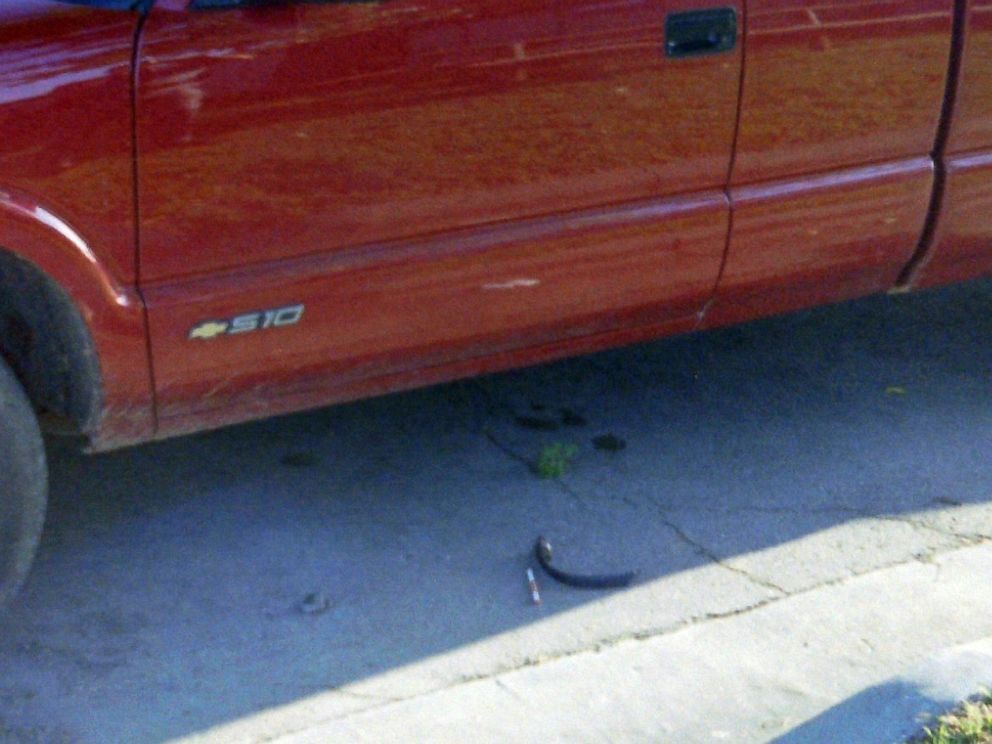
“Didn’t really know exactly what it was or what caused it, but it was unusual,” he said. “There was evidence of a struggle at the truck. We suspected foul play.”
The Bastrop police chief questioned Fennell and said he was visibly shaken and concerned, but not in a state of panic, according to the police report. When Fennell identified the belt found outside the truck as his fiancée’s, he broke down, the report said.
Stites’ body was found off a rural road outside of Bastrop around 3:30 p.m. that day.
There was an impressive response to the scene, according to local independent investigator David Fisher.
“The DPS Crime Lab arrives… down this dirt road in the middle of a pine forest,” he said. “Exiting were photographers, serologists, physical evidence collection people. This was quite a unique crew to show up in this little, sleepy county of Bastrop.
“They found Stacey on the side of a road in a bunch of wildflowers,” Carol Stites remembered.
“It was awful,” Oliver said. “My memory of that is my mom just sitting in her chair, just [repeating,] ‘My baby. My baby.’”
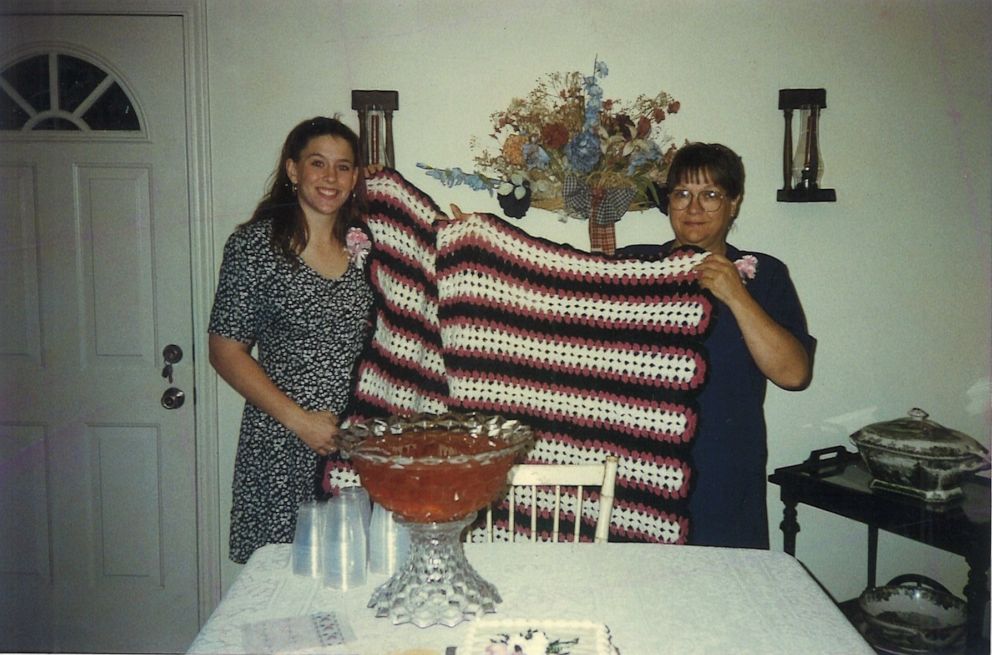
Carol Stites remembered the family had just held a bridal shower only days before.
“All the bridal stuff was still sitting on my dining room table,” she said.
Investigation continued as Stites’ family mourned
Stacey Stites’ cousin, Heather Stobbs, told “20/20” that as the family was gathering together, she realized, “instead of going to Stacey's wedding, now we're going to Stacey's memorial.”
Stacey’s sister said the family and Jimmy were devastated by her death.
Carol Stites remembered how Fennell said goodbye to his fiancée.
“He had the wedding ring in his hand, and he put the wedding ring on her finger,” she said. “She's buried with that wedding ring, and she's buried in her wedding dress. She worked hard for that wedding dress, and we all decided that that's what she should be buried in.”
Police initially looked at Jimmy as a suspect, which is normal given he was the fiancé, Tanner said. Stacey’s family also considered whether Fennell might be responsible.
“You kinda want to suspect the people nearest to her,” Stacey Stites’ sister Crystal Dobbs said. “You try to figure it out in your head… what happened and how did it happen? But once we knew that she had been raped, our emotions were like, it had to be somebody else.”

“We did not believe that Jimmy had hurt Stacey at all,” said Oliver, Stites’ other sister.
Fennell spoke with the media about losing his fiancée.
“It's gonna be with me forever,” he told Austin news KEYE-TV. “I'll think about it. It'll be there. There's no way it's gonna go away.”
DNA forensics was still in its infancy at the time of Stites’ murder. The lead DNA analyst in the case said the semen found in Stites’ body had been deposited at the same time as her killing. Therefore, the analyst said, if someone matched the DNA, it would indicate they committed the murder.
Many people in her life, from coworkers to acquaintances, were asked to provide a sample but no matches came up, including her fiancé.
Fennell was given two polygraphs in the months following Stites’ death. Investigators asked if he strangled Stites and if he was involved with her death, and to both he answered “no.”
The examiner determined he was deceptive in both answers, according to the examiner’s report. Fennell explained he was emotional and that all he could visualize was Stites lying dead in her casket.
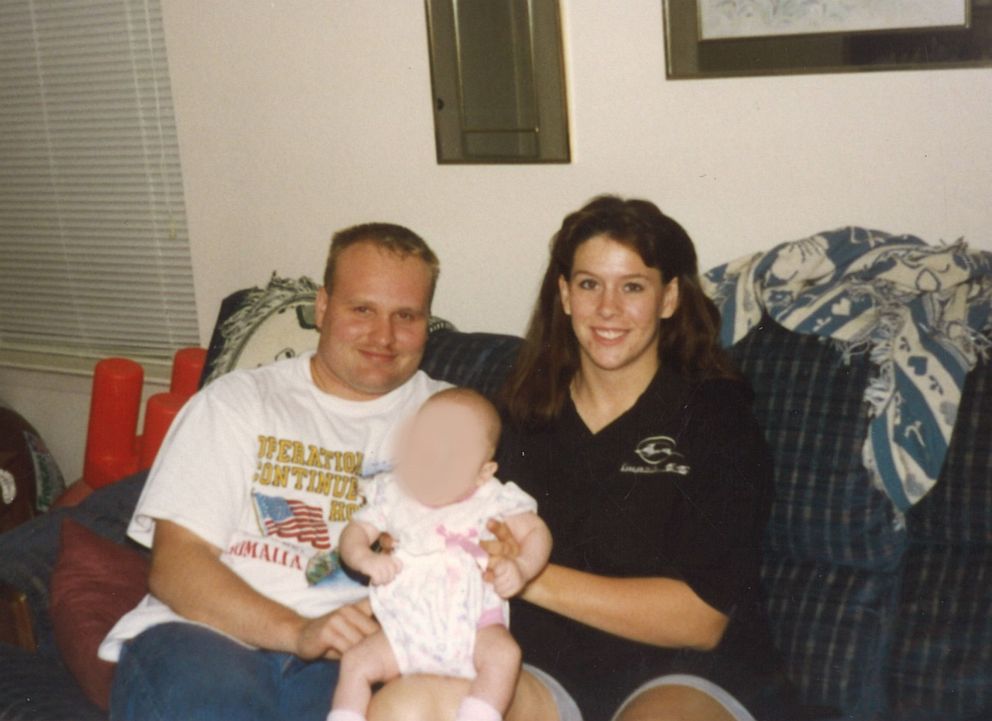
Oliver and Dobbs said they were not concerned about the polygraph results.
“[We] think that he was just upset,” Dobbs said. “I think he felt bad that he didn't get up and take her to work that day.”
Fennell himself has always maintained his innocence. In his interview with KEYE-TV, Fennell said “it’s hard having the finger pointed at you.”"It's hard when they're saying, ‘Yeah you killed Stacey, your fiancée,’” he said. “I didn't do it.”
Tanner said Investigators could not figure out how he would’ve gotten back home after the murder. His truck was found in Bastrop and he was home in Giddings, Texas, which is some 30 miles away.
Ultimately, Fennell was cleared as a suspect.
“They thoroughly vetted all the evidence they had, and they cleared him,” Fennell’s lawyer Robert Phillips told “20/20.”
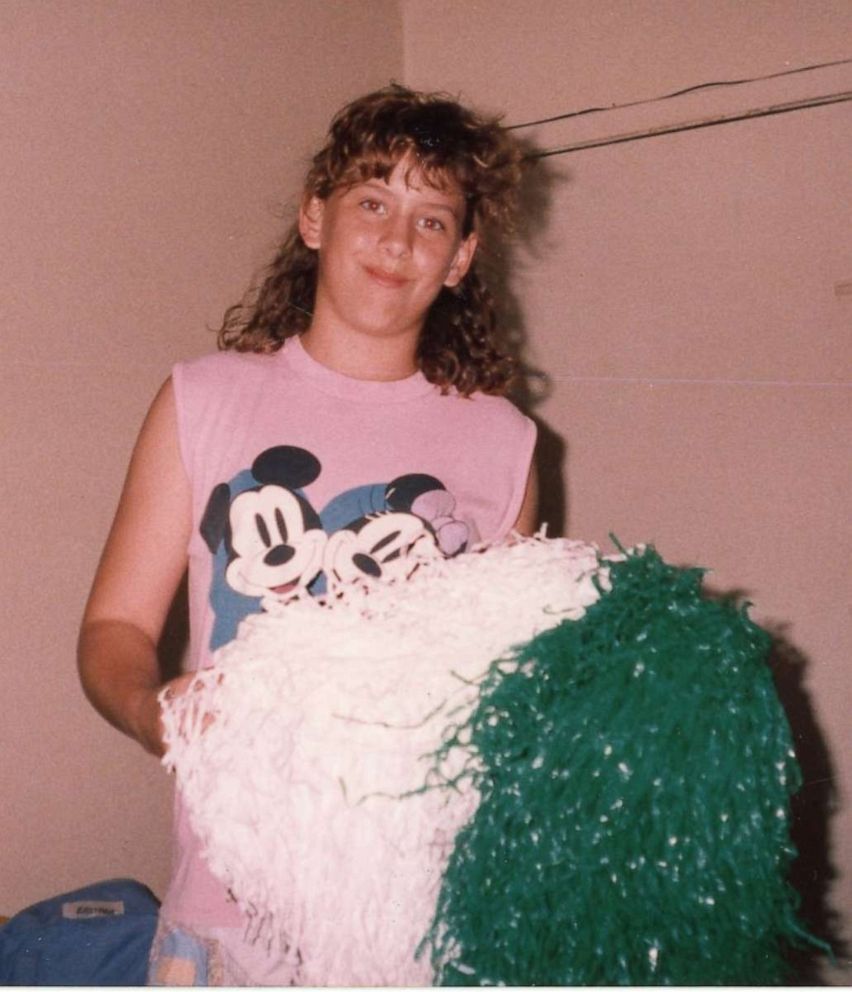
Stacey’s murder went unsolved for nearly a year.
Rodney Reed charged and convicted in Stites’ death
Linda Schlueter, who was also around Stites’ age, was attacked and had her car stolen seven months after Stites’ death. Schlueter later pointed out Rodney Reed in a photo array.
“I described the man… The police automatically knew who he was,” Schlueter told “20/20.” “They presented [pictures of] six Africans Americans on a piece of paper. This is the one who attacked me. The police told me that his name was Rodney Reed.”
Reed was arrested, then later released, without posting bond, in connection to Schlueter’s case.
Investigators said they saw similarities between Schlueter’s assault and Stites’ murder, which led them to see if Reed’s DNA was on file.
It was -- from a separate, earlier sex assault complaint against Reed. His DNA had been collected and stored in the system, though those charges were ultimately dropped.
In March 1997, investigators matched Reed’s DNA to DNA recovered from Stites’ body.
When he was first questioned by police, he told them, “I don't know a Stacey Stites. I've seen that stuff on the news and stuff like that, but I don't know that person.”
He also initially denied dating her and was asked to provide a DNA sample. By the time the questioning was over, he was charged with Stites’ sexual assault, kidnapping and murder.
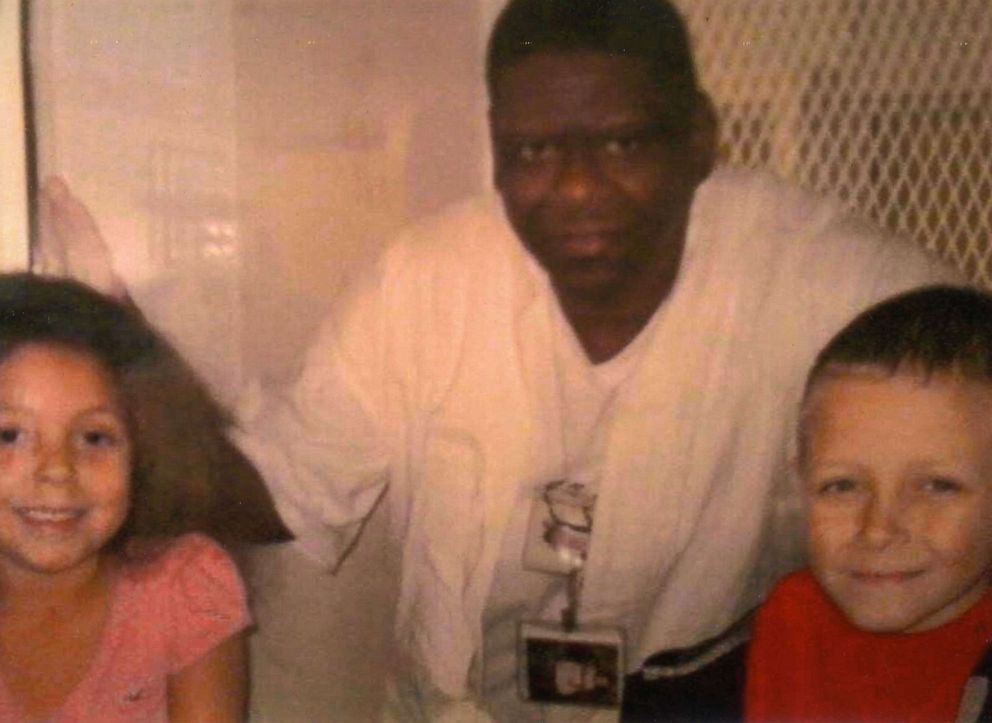
“My son was arrested for the murder of Stacey Stites,” said his mother Sandra Reed. “I knew it was a lie instantly. I'm hurt to the core. And, at the same time, I got to fight these people to save my son's life.”
Reed said he and Stites were having an affair.
“Stacey would pick him up at various locations, one being the H-E-B [grocery store] parking lot,” Reed’s former attorney Jimmie Brown said. “It wasn’t boyfriend-girlfriend, it was purely sexual.”
Brown said when Reed learned of Stites’ murder, Reed told him “he was afraid” because he knew he “was a Black male having sex with a white girl in Bastrop,” and how that could be seen as unacceptable. Brown explained that’s why, at first, he said he didn’t know her.
Reed’s court-appointed attorney Clay-Jackson said she and her co-counsel, Calvin Garvie, only had two months to prepare for the trial.
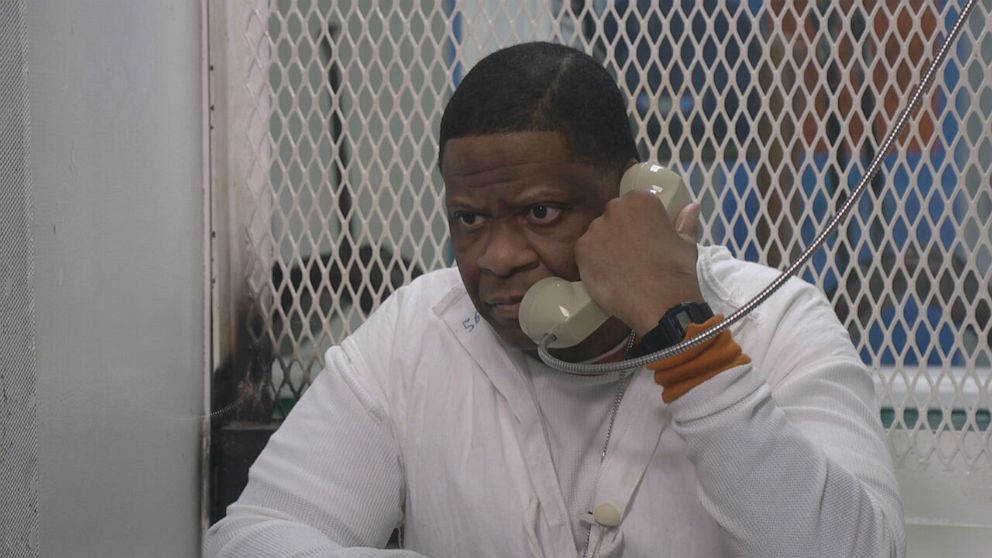
The prosecution argued that Reed abducted Stites while she was driving her fiancé’s truck on her way to work, raped her, strangled her and dumped her body on the road where she was found. They argued Reed put the truck less than 0.6 miles from his home and walked home.
The defense ran into a major problem when Clay-Jackson said no one could testify to Stites’ and Reed’s relationship.
“I knew we were in trouble,” Clay-Jackson said.
The all-white jury unanimously decided Reed was guilty.
In the sentencing hearing, Reed’s defense team says prosecutors presented a series of unadjudicated allegations against Reed.
Prosecutors presented the case of Vivian Harbottle Chapman, who was 39 at the time and was raped six months prior to Stites’ death in October 1995. DNA found on her matched that of Reed. Angela Hamby, 12, was raped in September 1989, and prosecutors said that evidence from her case also matched Reed’s DNA.
Reed has been charged with raping Chapman and Hamby, but denies the charges.
Reed’s attorney, Lydia Clay-Jackson, said he “denied it all.”
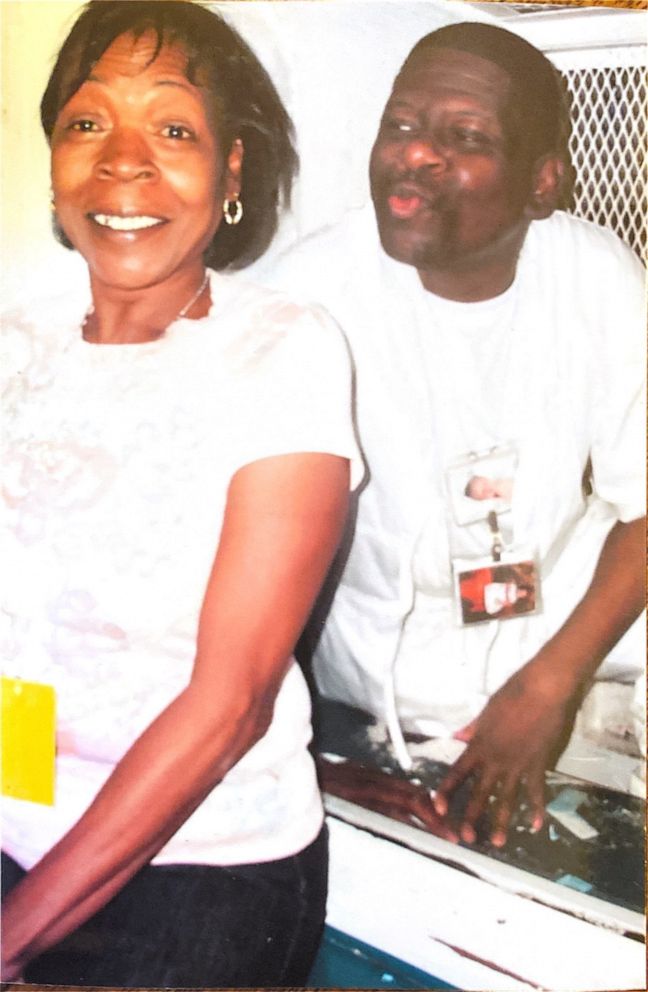
“When you have just witness after witness after witness coming... it's taking a huge toll out of your client who's told you that, no, he did not do that,” she said.
The jury took less than a day to come back with a decision in the Stites case, sentencing Reed to death for her murder.
“Early on I was somewhat upset, just for knowing her. If I wouldn’t have known her, I wouldn’t have been associated with her [and] I wouldn’t be in this situation,” Reed told ABC News in a 2019 jailhouse interview. “But, this is the situation that was handed to me so I have [to] accept … that I did know her. I have to accept that there was a relationship. I have to accept that I’m here now for something that I didn’t do.”
He said he had hoped the jury would hear the evidence and see he was innocent.
“None of them look like me,” Reed told ABC News. “Race played a big part. I didn’t see it at first. … I wasn’t seeing racism like that.”
Oliver and her mother say they had no doubts that Reed is responsible for Stites’ murder.
Authorities investigate Fennell in unrelated case
Eleven years after Stites’ murder, Texas Rangers investigated Fennell after a woman named Connie Lear accused him of raping her while he had her in custody.
In October 2007, police were called to an apartment complex where Lear and her boyfriend were attending a friend’s party, after a neighbor complained that the couple was having a drunken argument.
“The cops showed up, one being Jimmy Fennell Jr., and pretty much separated us apart so that they could figure out what was going on,” Lear told “20/20” about the incident.
Police arrested her boyfriend for public intoxication, put him in a patrol car and took him to the police station. According to a police report, Fennell allegedly told one of his colleagues he was going to try to get intelligence from her.
She says he told her to sit in the front of the car and realized “something was wrong” when they pulled into a “secluded park” and Fennell told her to get out.
“He slammed me up against the back of his patrol car, on the side of it,” she said. “He took out his weapon. He placed his utility belt and gun on the back of the car and pointed to what things were on the belt and then he jerked my pants down and he raped me.”
She says she didn’t fight back because she was scared. She says he drove her home, handed her a business card, and told her they would “do it again” the next day. She says he told her that if she told anybody, “he would hunt me down and kill me.”
Days later, Fennell was charged with aggravated sexual assault with a deadly weapon, aggravated kidnapping, improper sexual activity with a person in custody and official oppression. He ended up pleading guilty to improper sexual activity with a person in custody, and kidnapping. He was sentenced to 10 years in prison.
“The DA never, never talked to me about plea agreements,” Lear said.
“In no way am I denying that he committed a crime or that he didn't deserve to go to prison, because there was misconduct-- that he admitted and took responsibility for,” Fennell’s attorney Phillips said.
According to the report from the 2007 Ranger investigation, other women had come forward with allegations of sexual assault and misconduct against Fennell.
Phillips, told ABC News that “Authorities apparently thought so little of these extraneous offenses, that none of them were ever prosecuted, nor did these women ever testify in court.”
Phillips says Fennell “found the Lord in prison. After 10 years of hard time in a Texas prison, he’s serving Christ in the mission field of the street of Austin. He’s trying to put the pieces together to create a new world for himself.”
Lear says the sentence wasn’t enough.
“This is a person that is supposed to protect you,” Lear said. “There's no 10-year sentence that frees me of the things that [Fennell] did to me.”
New defense team raises questions about Reed’s conviction
One of Stites’ coworkers at H-E-B came forward in 2014, and in an affidavit she claimed Stites told her she was having an affair with Reed.
"I remember I was asking her about her engagement ring,” Alicia Slater said. “She told me that she wasn't that excited to get married, because she was ‘sleeping with a black guy named Rodney.’ To hear that she was actually having an affair was shocking to begin with, but then that it was also with a black man named Rodney, she and I both, you know, proceeded to say, like, ‘Wow, you need to be careful with this.’”
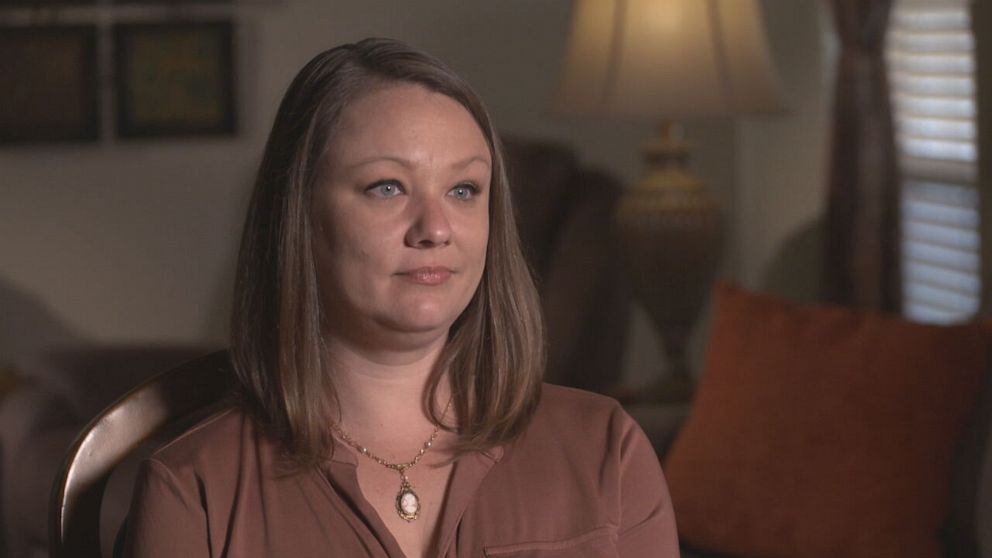
Slater said she didn’t come forward sooner because she was only 18 at the time and about to graduate from high school.
“I didn't want to get involved,” she said. “Fast forward to 2014, and I'm at work and I jump on Facebook. I saw that Rodney had been given an execution date. I didn't realize until then that what she told me had so much of an implication in the case.’”
In a 2016 filing, the state said her account is “patently unbelievable” and that she failed to mention the secret affair when she spoke to police at the time of the murder.
It’s been eight years since the Innocence Project has picked up Reed’s case and they have made repeated efforts to appeal and get a new trial. They hope to present new evidence at a hearing that’s been delayed due to the pandemic.
“It's awfully hard to find this evidence credible that he miraculously has this secret affair with this girl and somehow, his semen hangs around for several days,” Tanner said.
In an interview with ABC News’ Deborah Roberts, Roberts pointed to research suggesting sperm can last 72 days or longer. Tanner said “there are exceptions.”
“There are no absolutes in science, I completely agree with that,” she said. “There are outliers and I also understand that. That's why you look at all of the extraneous evidence as well in conjunction with just the DNA.”
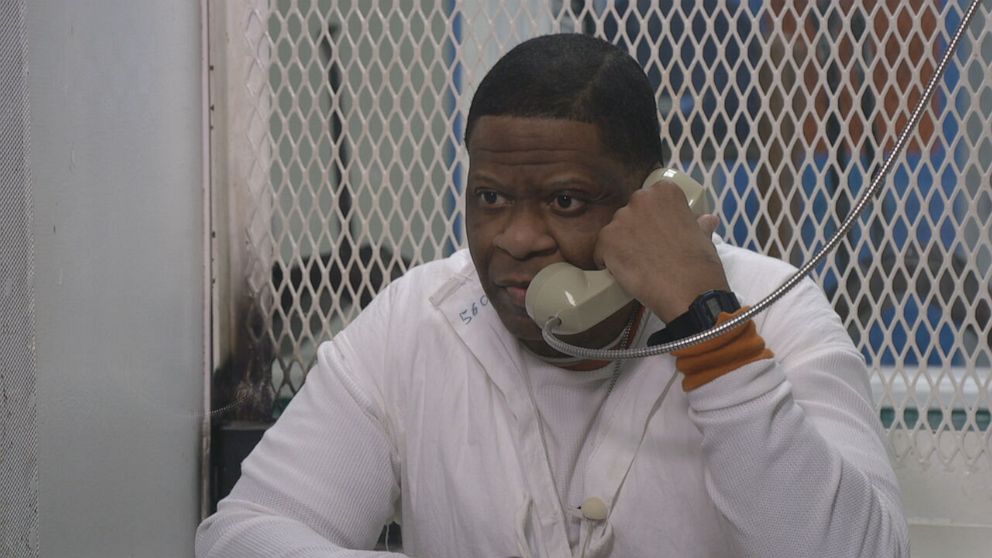
Reed’s legal team has also raised questions about the original investigation. They said police never searched the apartment Stites shared with Fennell.
“I wish [law enforcement] would have searched the apartment,” Tanner told Roberts. “I'm not gonna lie to you and tell you that, oh, it was okay. I've been doing this a long time. And never once have I ever had a case where I didn't at some point say, gosh, I wish law enforcement would have done whatever it is, X.”
They also questioned why his truck was returned to him within days after the murder. Prosecutors responded that the truck had been fully gone over and processed for evidence.
“Forensically speaking, they did everything that was available to examine the truck forensically at the time,” Tanner said. “It wouldn't have made any sense for them to keep it any longer than they did.”
The Innocence Project has brought nine new witnesses in their most recent appeal.
One is an insurance seller who was trying to convince Stites to purchase life insurance, to which Stites said she’s too young and has no need for it, according to the seller’s affidavit.
In the affidavit, the seller said that Fennell then said, “If you ever cheat on me, I will kill you and no one will ever know about it."
Another new witness, Charles Wayne Fletcher, was a former member of the Bastrop County Sheriff's Department.
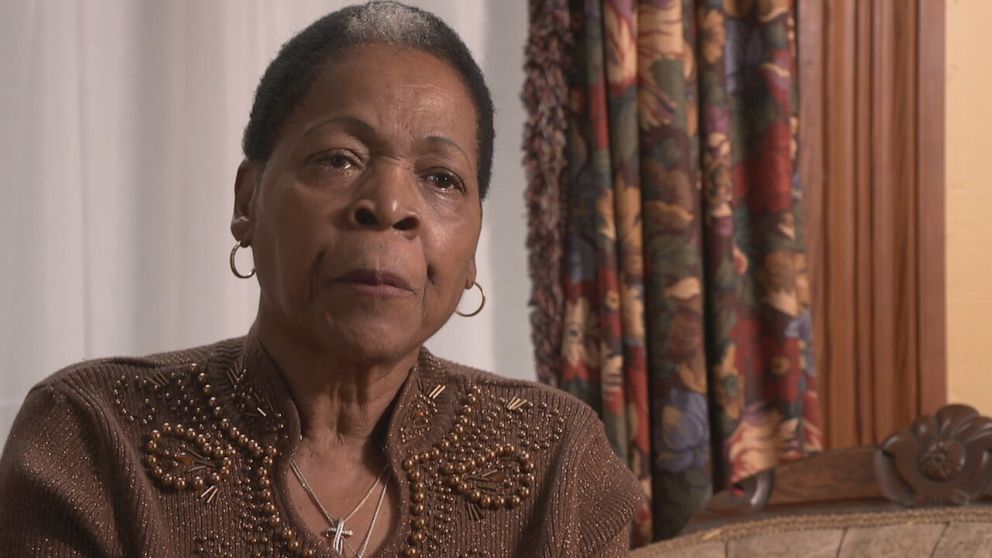
In an affidavit, Fletcher recalls Fennell saying he suspects Stites is sleeping with a Black man, while cursing and using a racial slur.
“Every time a new person comes forward, it's more colorful and creative than the last,” Phillips said. “I keep waiting for Mother Teresa to be the next witness coming in via epiphany from beyond the grave… I mean, it's just nonsense.”
In their response to the two affidavits, the State argued neither witness is believable because they waited so long to come forward.
Experts for the defense also claim the time of Stites’ death was hours earlier than the 3 a.m. to 5 a.m. window the prosecution argued at Reed’s original trial.
“When we take this to the actual medical examiner who testified, he gives us a sworn statement,” said Bryce Benjet, senior attorney at the Innocence Project, who is representing Reed. “[The medical examiner] said that, ‘Nobody should have relied on what I said.’”
The examiner wrote, “My estimate of time of death...was only an estimate, and should not have been used at trial as an accurate statement of when Ms. Stites died.”
In 2017, Reed’s defense attorneys tried to present forensic evidence from that 1996 murder that they said would prove his innocence in a hearing in Bastrop.
Dr. Michael Baden, a physician and board-certified forensic pathologist known for investigating the assassinations of John F. Kennedy and Martin Luther King Jr., as well as the Jeffrey Epstein and George Floyd autopsies, testified there are two reasons he believes Stites was likely killed earlier. He says the way the blood settled in the front of Stites’ body suggests she was killed before 3 a.m. and her body laid in a different position for hours before she was found on her back.
Baden also pointed to rigor mortis, or the stiffening of the body after death, that lasts for about 12 hours before the body begins to slacken again.
“We have videotape of the body of Stacey stites being examined and manipulated and put into a body bag [with] her arms folded,” Barry Scheck, another attorney with the Innocence Project, said. “That is very powerful scientific evidence that again, the time of death is way before that 3 a.m. to 5 a.m. window of the prosecution's case.”
The state argued that none of these methods establishing the time of death are totally reliable or have pinpoint accuracy, and Dr. Baden agreed.
The defense says that time of death is the key to proving Reed’s innocence. Because If Stacey was killed at midnight or earlier -- and not 3 a.m., then Reed would be excluded as the killer. The defense argued in legal filings the perpetrator would become Jimmy Fennell, because he said he was in the apartment with her that night.
Phillips told ABC News that Fennell was not in any way involved or connected to Stites’ murder.
“Not based on any of the credible evidence or physical evidence or forensic evidence,” Phillips said. “It's a concoction of creative, brilliant lawyers trying to save a condemned man -- who is worthily condemned, I might add.”
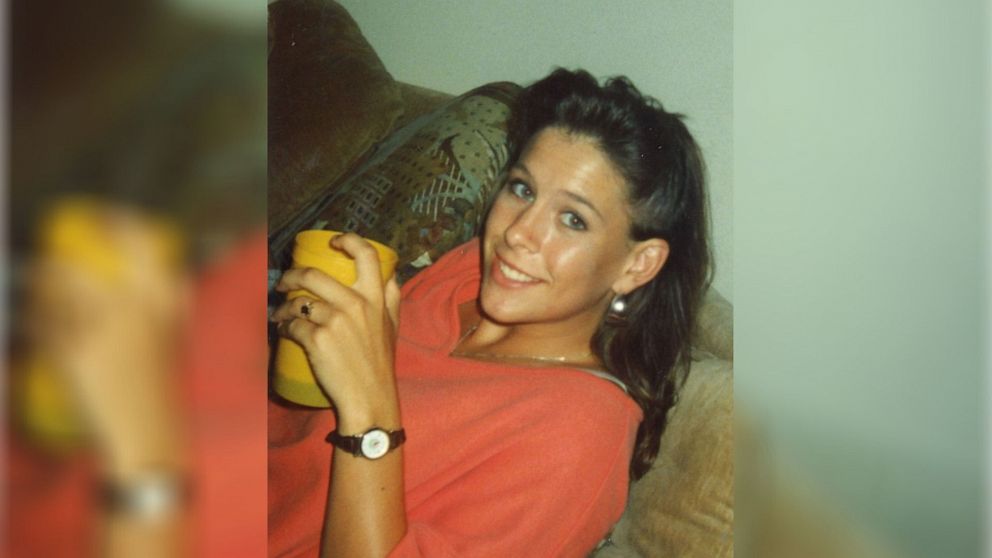
Prosecutor Lisa Tanner agreed that Reed, not Fennell, is guilty, saying that she is still sure “the right man has been convicted beyond a reasonable doubt of Stacey Stites’ murder.”
An uncertain future for Rodney Reed
Reed has appealed his case repeatedly from 2001 through 2015.
With just weeks to go before his scheduled execution, Reed garnered attention from the national media, including Dr. Phil, Oprah and The New York Times. He found support with local politicians and activists around the country, most famously including Kim Kardashian West.
Five days before his scheduled execution date, the Texas Board of Pardons and Paroles unanimously recommended that Texas Governor Greg Abbott grant Reed a 120-day reprieve. Later the same day, the Texas Court of Criminal Appeals indefinitely stayed Reed's execution.
“[It] was tremendous,” Quinncy McNeal, an attorney on Reed’s team, said. “I got an opportunity to be in the prison with Rodney on the day that stay came down… we got a chance to tell Rodney of the stay of execution.”
Dobbs, Stites’ sister, says, “It's just frustrating. But you leave it to God.”
A hearing for the defense to present new evidence, including questions about Stites’ time of death, has been delayed due to the COVID-19 pandemic.
Through every trial, hearing and court update, Sandra Reed is standing by her son.
“I have a son's life to save,” she said. “That's what I'm tryin' to do… I have to hold onto my faith, and stand on this truth and the facts. And the scientific facts and findings have proven that he is innocent. I stand on that. I thank the world for the support.”
Carol Stites hopes the world remembers her daughter “was human… and all she wanted to do is get married and have a baby,” she said.
“We're gonna get the truth out there. And her voice will be heard,” Oliver said. “We know for sure that, 100% positive, that Rodney Reed murdered my sister.”




